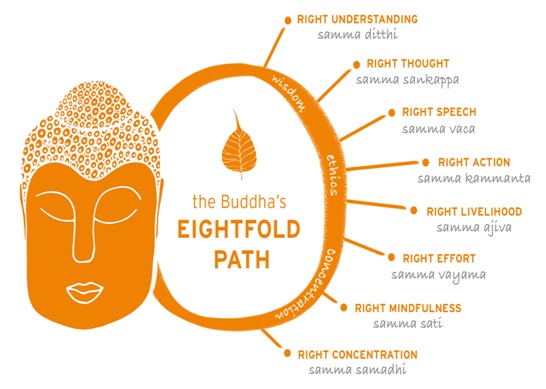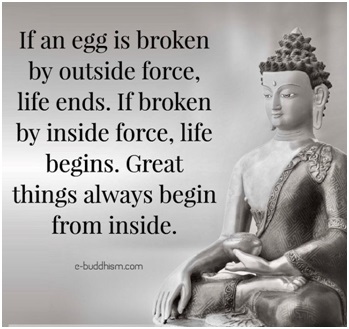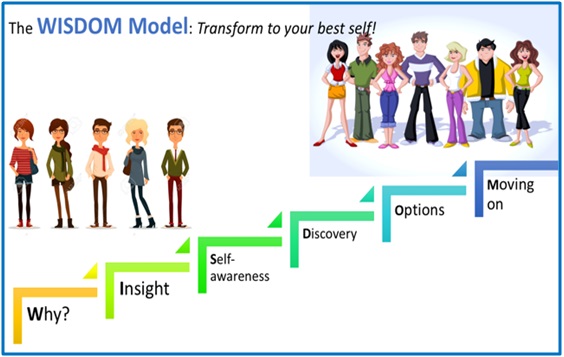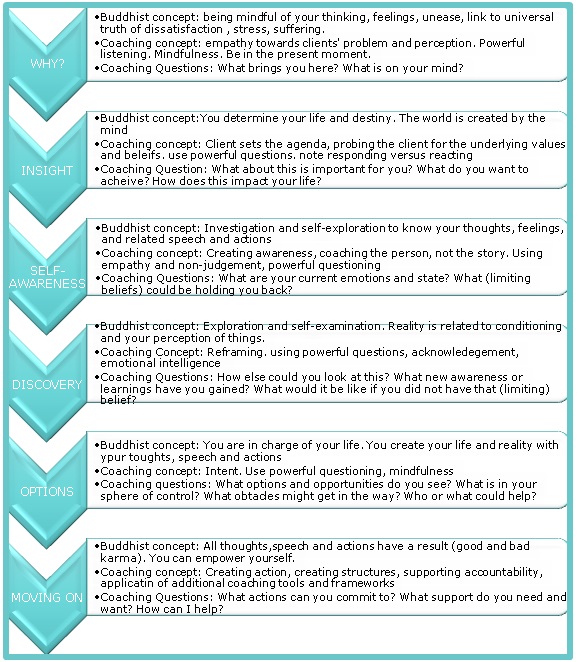A Coaching Model Created by Gaya Gamhewage
(Executive Coach, SWITZERLAND)

Introduction
When I started my coaching journey with ICA just six short months ago, I felt like a child again. I went from the all-knowing expert to the curious but incompetent child on a steep learning curve.
A medical doctor and public health expert, I’ve spent the past 20 years helping others in learning and mastering competencies to address complex problems. The longer I work in learning and development, and leadership development, the more I have become convinced that meaningful learning and growth must be transformational, not transactional.
Daniel Goleman and Richard Boyatzis[i] propose four domains to the Emotional and Social Intelligence Leadership Competency Model: Self-Awareness, Self-Management, Social Awareness, Relationship Management, all of which are essential to self-development and transformation.
But my gut told me there was more. What was missing, I realized, was something I was already applying to my work and life from the spiritual tradition from which I hail: Buddhism. I was using the best of East and West without even realizing it!
The goal of Buddhism is personal growth and transformation using not only knowledge and intelligence but by developing wisdom. In Theravada[ii] Buddhist philosophy, wisdom (Panna in the ancient Pali language in which the Buddha taught)[iii]is one of three strategies required in the Noble Eightfold Path prescribed by the Buddha 2,600 years ago. This path is meant to help anyone find liberation or freedom from stress, unhappiness, and suffering that permeates our existence[iv]. The other two strategies are ethical behavior (Sila), and mental development through mindfulness and concentration meditation (Samadhi). These three strategies have helped me throughout my life. It creates an alignment in my life and forms the overriding philosophy of my coaching model. Seen from another perspective, it is also the acronym outlining the major stages that I use to help clients transform.
Many core ideas of Buddhist teaching are now mainstream across the world, albeit adapted from their original meanings. These include insight, meditation, mindfulness, present-moment awareness, being present, and nirvana. They are used today by people of all belief systems, and from all walks of life. I want to apply the Buddhist meaning of wisdom more systematically to coaching.
In the Noble Eightfold Path of the Buddha, wisdom is made up of the Right View and Right Thought (intention/resolve).

Right view involves[v] “seeing things as they really are; seeing beyond the surface of things; understanding that all things – even us, our circumstance, our feelings, and perception – are changing constantly. This involves insight; penetrative understanding; objective observation of situation and self; and objective observation coupled with an inquiry, examination, and consideration”. “Wrong view occurs when we impose our expectations onto things; expectations about how we hope things will be, or about how we are afraid things might be. Right view occurs when we see things simply, as they are. It is an open and accommodating attitude. We abandon hope and fear and take joy in a simple straight-forward approach to life.” The Buddha himself explained Right View as fundamental to “the practice leading to the stopping of stress (also translated as dissatisfaction or suffering).” Applied to coaching, Buddhist Right View relates to the awareness of self and situation; the knowledge that all things will change; self-examination; learning from lived experience; taking responsibility for our lives.

Right Thought, according to Buddhist teachings, is “being resolved on renunciation, on freedom from ill will, and harmlessness.” These can be linked to letting go of objects, situations, practices, emotions, and mindsets that no longer serve us; and on developing compassion and kindness towards oneself and others. Meditation supports both the right view and right thought.
 Buddhist wisdom places responsibility for our lives and self-development on ourselves. It is the journey inwards deep into our minds and focuses on the present moment, much like the philosophy behind coaching. Finally, it enables transformation to be the best we can be, on our own terms, at our own pace.
Buddhist wisdom places responsibility for our lives and self-development on ourselves. It is the journey inwards deep into our minds and focuses on the present moment, much like the philosophy behind coaching. Finally, it enables transformation to be the best we can be, on our own terms, at our own pace.
The WISDOM MODEL
My model is based on a secular approach drawing on the concept of wisdom according to Buddhism and expanding the concepts in emotional intelligence. Wisdom should lead you to develop, transform, and evolve to be the best you can be. At the same time, it describes key steps that the client must climb with the help of the coach. It should lead to Wisdom involving 3 key interlinked and iterative phases: Discovery, Reflection, Evolution.

⇓
Leading to Discovery. Reflection. Evolution For individuals or teams
The diagram below depicts the 6 stages of the WISDOM coaching model and the main Buddhist concepts and coaching concepts and possible questions that define each stage. It links the WISDOM model to some (not all) key coaching interventions prioritized in the ICA certified coaching program.



The WISDOM model requires the coach to commit to helping the client see things as they really are (Right View), beyond what is merely sensed (seen, heard, felt), and beyond subjective perceptions. It is consistent with a coach’s’ duty to help create awareness, to dig deeper, and to self-examine. Drawing from the Buddhist concept of Right Thought, the model reminds the coach to support the client in renunciation (let go of things that do not serve the client) and cultivate compassion and harmlessness to self and others.
Using the WISDOM model
Progress through the stages can be step by step or be completed in the most natural order according to the flow within the coaching session(s). It can be used for individual or group coaching; and for transactional coaching as an individual session, or for more sustained transformative coaching over a period and in several sessions.
References
[ii]https://www.accesstoinsight.org/theravada.html
[iii]The Wheel Publication No. 308/311 (Kandy: Buddhist Publication Society, 1984), second edition (revised) 1994.
[iv]Magga-vibhanga Sutta: An Analysis of the Path translated from the Pali by Thanissaro Bhikkhu© 1996; from the Samyutta Nikaya (Saṃyutta Nikāya (SN 45.8)
[v]https://www.buddhanet.net/fundbud8.htm